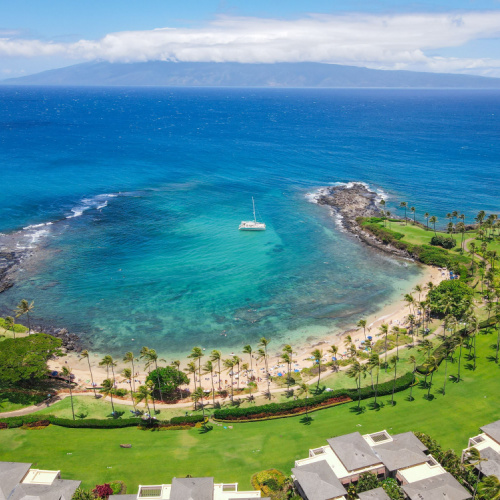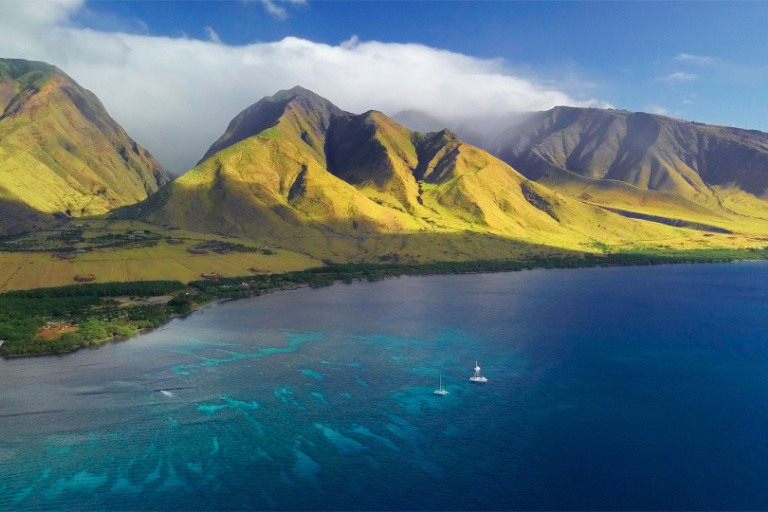
Unwind/Shutterstock
When Is the Best Time to Visit Maui?
The best time to visit Maui is during the shoulder seasons of April to June and September to October. During these months, the weather is generally mild and sunny, with fewer crowds and lower prices than during the peak summer season (July and August).
Here are some of the benefits of visiting Maui during the shoulder seasons:
- Mild weather: Maui has a tropical climate, with warm summers and mild winters. The shoulder seasons offer pleasant temperatures, making them ideal for sightseeing, exploring, and enjoying the outdoors.
- Smaller crowds: The shoulder seasons are less crowded than the peak summer season, so you’ll be able to enjoy Maui’s popular tourist attractions without having to deal with large crowds. This is especially important if you’re visiting popular destinations like Haleakalā National Park, Road to Hana, and Kaanapali Beach.
- Lower prices: Prices for flights, accommodation, and activities are generally lower during the shoulder seasons than during the peak summer season. This means you can save money on your trip without having to sacrifice quality.
Here are some specific examples of how you can enjoy the most of Maui during the shoulder seasons:
- Spring (April to June): The weather in spring is typically sunny and mild, with occasional showers. This is a great time to visit for hiking Haleakalā National Park, snorkeling at Molokini Crater, and attending the Maui Arts & Cultural Festival.
- Autumn (September to October): The weather in autumn is also typically sunny and mild, with occasional showers. This is a great time to visit for whale watching, visiting the Iao Valley State Monument, and attending the Maui Film Festival.
While there are many great times to visit Maui, if you’re looking for the best weather and the most opportunities to enjoy the island’s outdoor activities, then we recommend visiting during the shoulder seasons of spring and autumn.
 Average Temperatures by Month
Average Temperatures by Month
|
Jan |
Feb |
Mar |
Apr |
May |
Jun |
Jul |
Aug |
Sep |
Oct |
Nov |
Dec |
| Fahrenheit |
73°
|
73°
|
74°
|
75°
|
76°
|
78°
|
79°
|
79°
|
79°
|
78°
|
76°
|
74°
|
| Celsius |
23°
|
23°
|
23°
|
24°
|
24°
|
26°
|
26°
|
26°
|
26°
|
26°
|
24°
|
23°
|
Climate in Maui
Summer Season in Maui
Summers in Maui are warm and relatively dry, with temperatures typically ranging from 25°C to 30°C (77°F to 86°F). This season is characterized by sunny weather and lower rainfall, making it ideal for beach activities, snorkeling, and exploring the island's natural attractions like the Haleakalā National Park. The weather is generally consistent across the island, though microclimates can lead to variations in certain areas.
Rainy Season in Maui
The rainy season in Maui brings more frequent and heavier rainfall, particularly on the windward (eastern) side of the island, which is essential for maintaining its lush landscapes. Despite the increased rainfall, temperatures remain warm, and there are still plenty of sunny days. This season is perfect for exploring the island’s rainforests and waterfalls, which are particularly vibrant during these months.
Winter Season in Maui
Winters in Maui are mild and coincide with the rainy season, featuring slightly cooler temperatures, usually ranging from 21°C to 26°C (70°F to 79°F). The winter months are an excellent time for whale watching, as humpback whales migrate to Hawaii's warmer waters. The winter season offers a mix of sunny and rainy days, providing a balance that allows visitors to enjoy both the beaches and the lush, rain-fed interior landscapes.
Our Recommendations
| Destination |
Jan |
Feb |
Mar |
Apr |
May |
Jun |
Jul |
Aug |
Sep |
Oct |
Nov |
Dec |
| Maui |
 |
 |
 |
 |
 |
 |
 |
 |
 |
 |
 |
 |






